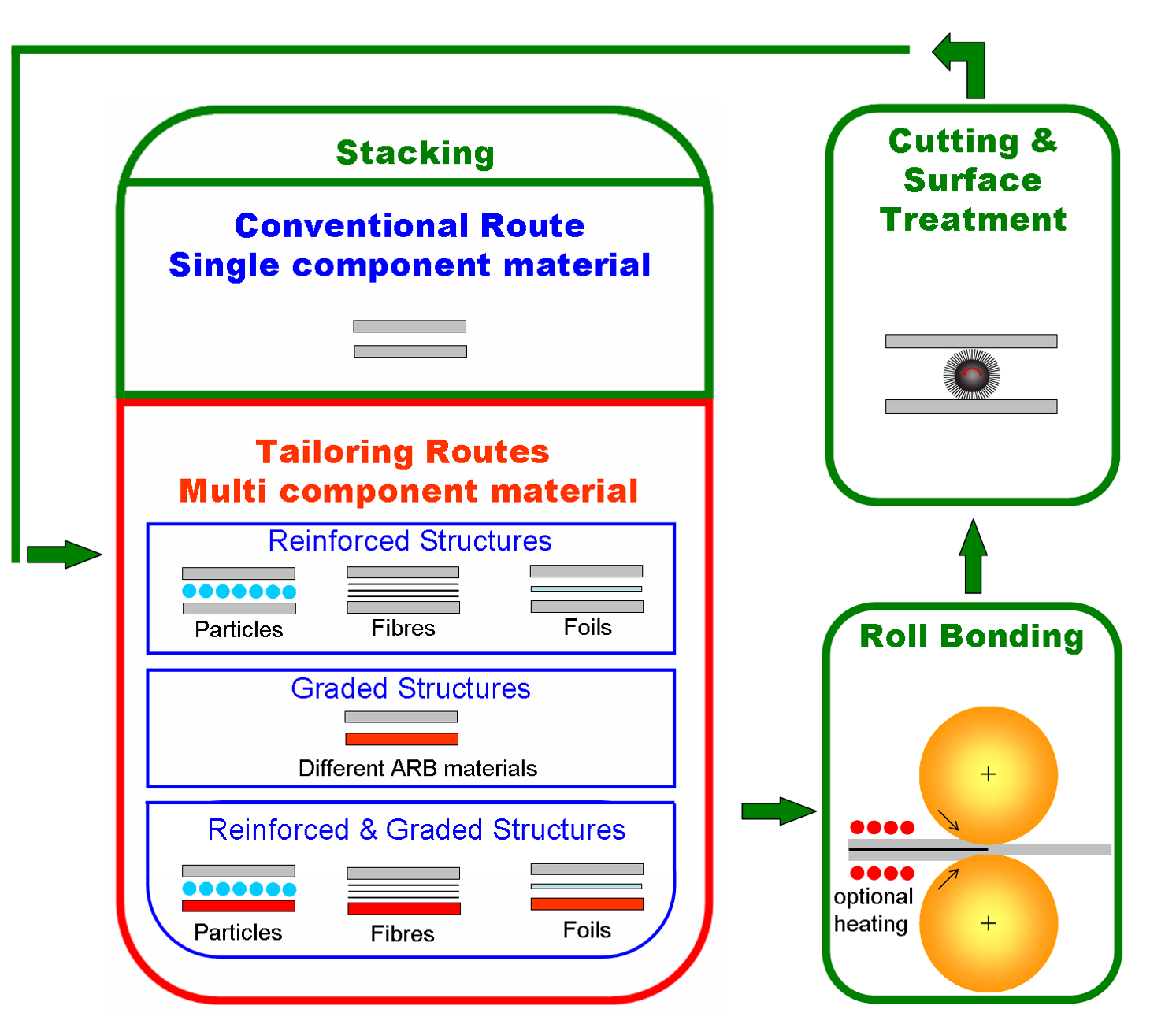Influence of different laminated metal composite structures and compositions on fracture mechanic properties and damage mechanisms
Subject area:
Nanostructured materials
Responsible Employees:
Prof. Dr.-Ing. Heinz Werner Höppel
Sebastian Vollath (M. Sc.)

Laminated Metal Composites (LMCs) consist of alternating metal layers of different alloys, connected via interfaces. The objective of the manufacturing process of LMCs is to combine the desired material properties of the individual components and gain a composite material with better properties than the weighted average (rule of mixture) calculated from the constituent materials. The concept of using these advantages gained by laminated metal structures has a long history dating back to ancient Japanese and Middle Eastern forging and blacksmithing to produce swords and daggers (e.g. Damascene steel). Using these special forging technics, ancient Japanese blacksmiths were able to forge light swords with very hard blades combined with a though core.
The accumulative roll bonding (ARB) process makes it possible to elevate the production of tailor made sheet metal laminates to an industrial scale. The laminate’s architecture as well as grain size can have substantial influence on various material properties and can be adjusted accordingly by certain process parameters during the ARB process. Combining certain alloys one can produce LMCs which are of particular interest for lightweight construction or electrical applications with additional demand for excellent mechanical stability.
The ARB process is a useful tool to manufacture novel laminate concepts with tailored mechanical properties. However, a fundamental understanding of the hardening, deformation and damage mechanisms of laminated metal structures and is necessary for further material development.
This project focuses on studying the fracture mechanic properties of laminated metal composites during monotonic, cyclic bending and push/pull tests with respect to orientation dependence of properties. Major focus lie on the examination of the underlying damage mechanisms in the laminate architectures as well as influences of lamellar architecture and gradients in material properties at the interfaces on the deformation zone ahead of the crack tip. This investigation can be assisted performing in situ bending fatigue tests using the unique large chamber SEM (LC-SEM).
[1] D. R. Lesuer, C. K. Syn, O. D. Sherby, J. Wadsworth, J. J. Lewandowski, and W. H. Hunt, “Mechanical behaviour of laminated metal composites,” Int. Mater. Rev., vol. 41, no. 5, pp.